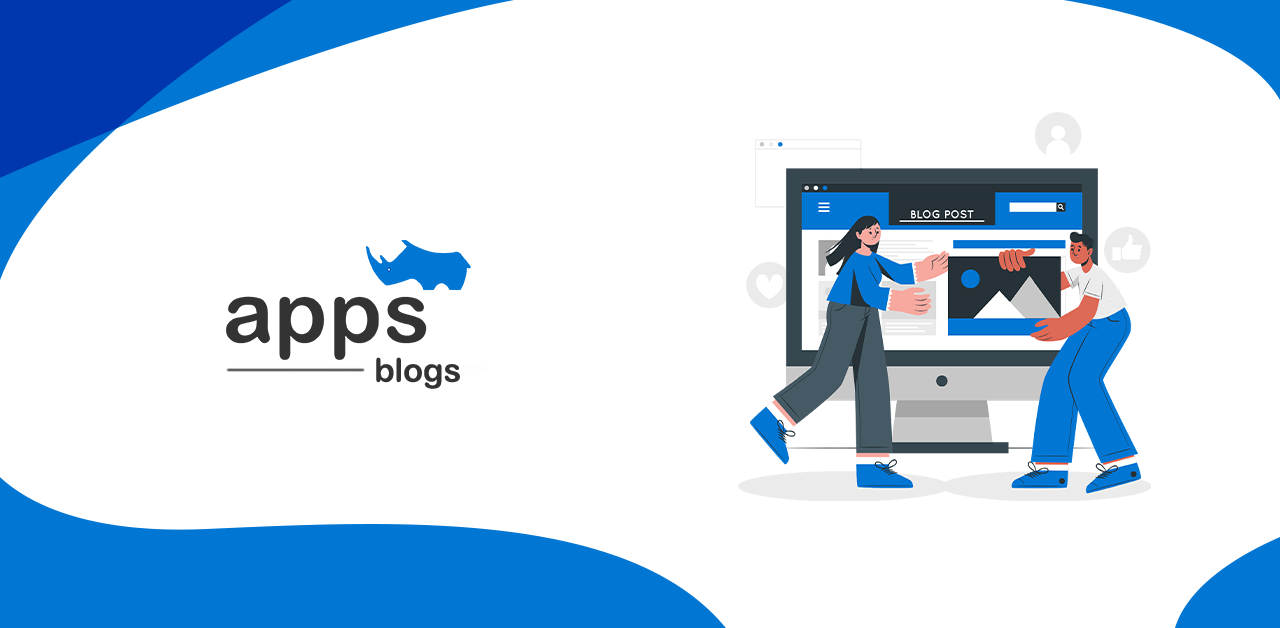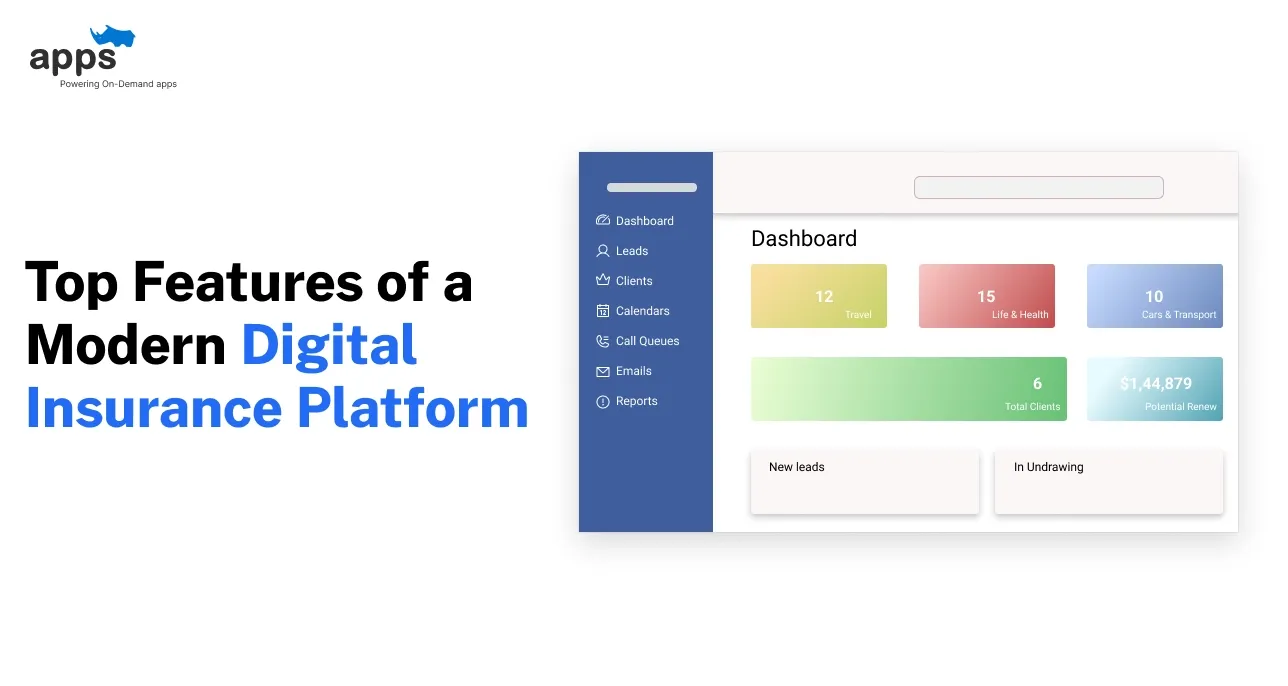- Introduction
- What is Telehealth?
- Why Telehealth App Development is Important
- The Benefits of Telehealth App Development
- The Key Features of Telehealth Apps
- The Telehealth App Development Process
- Conclusion
- Frequently Asked Questions (FAQs)
Table of Contents
Embrace Digital Transformation with Telehealth App Development

Introduction
Let’s delve into the fascinating world of technology and healthcare combo- telehealth apps! When the world is rapidly turning digital, why should healthcare stay behind? This blog is your go-to guide for 'telehealth app development'.
Imagine having health services right at your fingertips. Convenient, isn't it? It’s time we embrace this shift towards digital and simplify healthcare accessibility. Here, we'll explore all about developing your very own telehealth app.
This isn't about fancy tech language or complicated codings. It's about the practical, real-world application of how technology can make healthcare a smoother ride. So, whether you're a health professional, tech enthusiast, or just a curious reader, join us as we break down the ins and outs of telehealth apps, taking healthcare a step further into the future.
Stay tuned for a close look at this major healthcare game changer. Buckle up for this exciting digital revolution journey!
What is Telehealth?
The domain of Telehealth, where physical boundaries are transcended by technological marvels. This innovative method, also known as telemedicine, enables the remote delivery of medical services, allowing patients to receive counsel, consultations, and even treatment without the need for in-person visits.
Why Telehealth App Development is Important
The Need for Convenient and Accessible Healthcare
In our hectic lives, convenience is of paramount importance. Telehealth applications grant patients access to healthcare services on-demand. No more congested waiting rooms or hurried appointments; with a few touches on their devices, patients can communicate with healthcare professionals for timely and convenient consultations.
Expanding Healthcare Reach to Remote Areas
Telehealth applications dismantle geographical barriers, allowing individuals in remote areas or with limited transportation options to access healthcare services. Underserved populations can now consult healthcare providers from the convenience of their own residences, a revolutionary improvement in accessibility.
Improving Healthcare Efficiency and Cost-effectiveness
By streamlining healthcare processes, telehealth app development reduces the system's burden. By eliminating the need for non-urgent in-person visits, these applications liberate vital resources for more pressing medical requirements. In addition, the digital approach reduces healthcare costs by requiring less physical infrastructure and resources.
Facilitating Remote Monitoring and Chronic Disease Management
Telehealth applications enable remote monitoring of patients' health conditions and management of chronic diseases. Healthcare providers can monitor vital signs, receive real-time data, and intervene as necessary using connected devices. This is particularly advantageous for patients with chronic conditions, as it ensures that their health is closely monitored for enhanced management and outcomes.
The Benefits of Telehealth App Development
Telehealth app development brings forth a plethora of benefits for both patients and healthcare providers:
Convenience and Accessibility for Patients
Say goodbye to the era of inconvenient doctor's office appointments and lengthy wait times. Telehealth applications herald in a new era of healthcare accessibility, enabling patients to navigate their health journey with a few touches on a mobile device. From scheduling appointments to consulting with physicians and obtaining prescriptions, it is similar to having a doctor on call, available whenever required, all from the convenience of home.
Enhanced Communication and Collaboration between Patients and Healthcare Providers
Telehealth applications facilitate seamless communication between patients and healthcare professionals, allowing for instantaneous interaction. Patients can ask inquiries, discuss symptoms, and receive real-time expert advice. This open channel of communication fosters a sense of participation and engagement in the patient's healthcare journey, similar to having a dedicated healthcare companion just a message away.
Streamlined Appointment Scheduling and Prescription Services
The agony of waiting for hours or enduring pharmacy lines should be eliminated. Telehealth applications facilitate the administrative landscape of healthcare by enabling patients to book appointments and order prescriptions online with ease. It is comparable to having a personal assistant handle all healthcare-related duties, allowing patients to focus on their own health.
Remote Monitoring and Health Tracking Capabilities
The seamless integration of telehealth applications with wearable devices and health monitoring tools enables patients to monitor vital signs such as heart rate, blood pressure, and glucose levels. This information can be shared with healthcare providers for proactive interventions and early detection of health issues, akin to the watchful eye of a health coach who closely monitors well-being.
Improved Patient Engagement and Health Education
Telehealth applications facilitate access to resources for self-care and health education. The app provides patients with access to a plethora of educational materials, instructional videos, and personalised treatment plans. This enables patients to take charge of their health and make informed decisions, as they have access to a virtual wellness library.
The Key Features of Telehealth Apps
In the aftermath of a digital revolution in healthcare, telehealth applications have emerged as transformative tools, connecting patients with healthcare providers for advice, prescriptions, and treatment, all without the limitations of in-person visits. Explore in greater detail the defining characteristics of these apps:
Video Consultations and Virtual Visits
The capacity to conduct video consultations is at the vanguard of telehealth applications. This feature empowers patients to virtually communicate with healthcare providers, transcending the need for physical visits. It exemplifies the convenience and adaptability that these applications bring to healthcare by providing medical advice in the privacy of individuals' residences.
Electronic Health Records (EHR) Integration
The integration and retrieval of electronic health records (EHR) by telehealth applications provides healthcare providers with a comprehensive view of patients' medical histories, medications, and previous treatments. This integration provides invaluable insights into the medical history of the patient, thereby augmenting the precision of care.
Appointment Scheduling and Reminders
With telehealth applications, scheduling medical consultations is simplified. Patients are able to schedule appointments, receive confirmations, and set reminders for forthcoming consultations in a streamlined manner. This feature promotes expeditious and effective healthcare delivery by ensuring that appointments are not forgotten.
Prescription Requests and Refills
Telehealth applications make the prescription procedure easier. Patients can easily request refills via the app, initiating an electronic exchange with healthcare providers who can authorize requests and transmit prescriptions to pharmacies, thereby expediting medication management.
The Telehealth App Development Process
A telehealth application must be developed with meticulous planning and attention to detail. Here is a concise overview of the app development procedure for telehealth:
Conducting Market Research and Identifying User Needs
The initial phase includes extensive market research to identify user requirements, essential features, and possible competitors. This step provides the framework for developing a telehealth application that meets the specific needs of its users.
Designing an Intuitive and User-friendly Interface
The development of a telehealth app mandates meticulous attention to an intuitive and user-friendly interface. The design must prioritize user-friendliness, facilitate navigation, and be visually appealing to ensure a seamless user experience.
Building a Secure and Scalable Backend Infrastructure
Backend infrastructure is the backbone of a telehealth application, necessitating both security and scalability. This fundamental component must provide sufficient storage, processing capacity, and computing resources to support the app's numerous features and functionalities.
Integrating Third-party APIs and Electronic Health Record Systems
Telehealth apps require seamless integration with third-party APIs and Electronic Health Record (EHR) systems in order to fulfill essential functions and facilitate data exchange between healthcare providers and patients. This integration is essential for a unified and all-encompassing healthcare experience.
Testing the App for Functionality and Usability
A crucial stage in the development of a telehealth application is the exhaustive testing of both functionality and usability. This exhaustive examination identifies any bugs or inconsistencies, ensuring the app's optimal performance and a flawless user experience.
Launching the Telehealth App and Marketing it to Users
Launching a telehealth application requires rigorous strategic planning and committed marketing efforts. The development of a comprehensive marketing strategy, the implementation of outreach programmes, and the formation of partnerships with healthcare organisations and telehealth service providers are essential for ensuring widespread user adoption.
Collecting Feedback and Iterating on the App
The iterative refinement of the app is an ongoing process that is prompted by user feedback after the app's release. Systematically accumulating user insights enables developers to improve the app's functionality and usability, promoting a cycle of continuous improvement and resulting in a superior user experience.
Conclusion
Telehealth applications are at the forefront of the ongoing digital transformation in the healthcare industry. These innovative platforms provide patients with a lifeline of convenience and adaptability, facilitating the administration of medical advice and treatment in the comfort of their own residences.
The potential for telehealth app development is limitless, promising improved access to healthcare services and a higher quality of care.
Are you prepared to embark on this digital transformation endeavor in the healthcare industry? Incorporating technology into the fabric of healthcare not only facilitates processes, but also has the potential to reshape the patient experience. The future of healthcare is one in which care touchpoints are as limitless as technological capabilities. Are you prepared to embrace the change?
Frequently Asked Questions (FAQs)
What is digital transformation in healthcare and how can telehealth app development contribute to it?
Digital transformation in healthcare refers to the integration of technology to improve patient care, operational efficiency, and overall healthcare delivery. Telehealth app development plays a crucial role in this transformation by providing a platform for healthcare providers to offer remote consultations, virtual visits, and other digital healthcare services, making healthcare more accessible and convenient for patients.
How can a telehealth app benefit my healthcare practice?
Implementing a telehealth app can bring numerous benefits to your healthcare practice. It expands your reach by allowing remote consultations, reduces administrative burdens, streamlines workflows, improves patient engagement and satisfaction, and enhances overall efficiency by maximizing your resources.
Is telehealth secure and compliant with patient privacy regulations?
Yes, telehealth app development prioritizes patient privacy and security. Robust security measures, such as encryption, access controls, and compliance with regulations like HIPAA, ensure that patient data remains confidential and protected from unauthorized access.
Can a telehealth app integrate with my existing systems and electronic health records (EHR)?
Yes, telehealth apps are designed to integrate seamlessly with existing systems and EHRs. This integration enables the consolidation of patient records, reduces duplicate data entry, and ensures a more comprehensive view of a patient's medical history, leading to better-informed healthcare decisions.
How can a telehealth app enhance patient engagement and satisfaction?
A telehealth app provides patients with a convenient and user-friendly platform to access healthcare services from their mobile devices. Features like online appointment scheduling, secure messaging, and virtual consultations increase patient engagement, improve communication, and ultimately lead to higher patient satisfaction.
What support and maintenance can I expect for my telehealth app after development?
Professional telehealth app development providers offer ongoing support and maintenance services. This includes software updates, security patches, technical assistance, and troubleshooting support to ensure that the app remains functional, secure, and optimized for both healthcare providers and patients.
Table of Contents
- Introduction
- What is Telehealth?
- Why Telehealth App Development is Important
- The Benefits of Telehealth App Development
- The Key Features of Telehealth Apps
- The Telehealth App Development Process
- Conclusion
- Frequently Asked Questions (FAQs)



